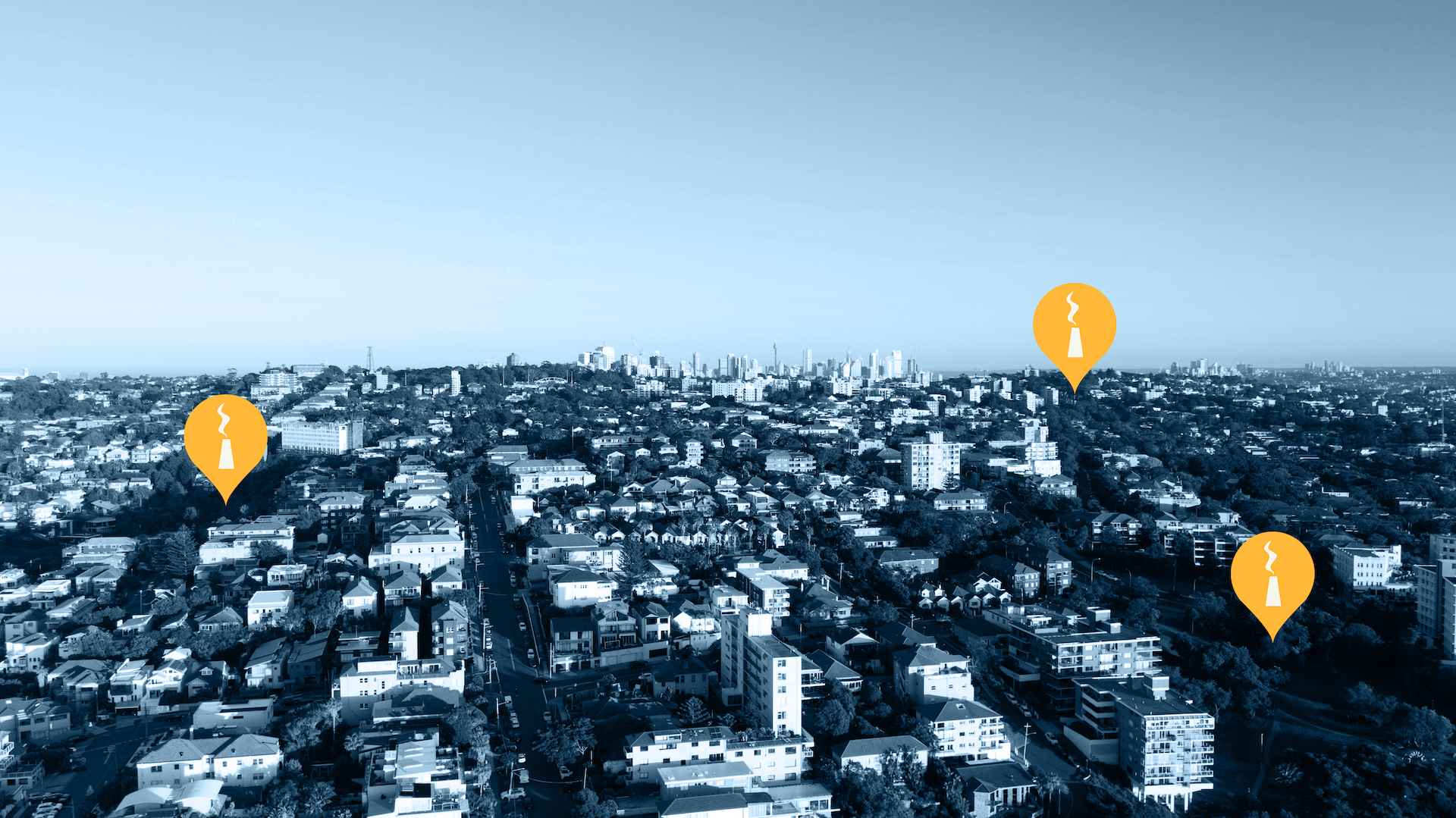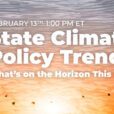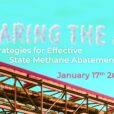We are living in a broken system that unfairly targets black Americans in every possible way.
Over the past few weeks, protests have exploded across our country demanding racial justice and the dismantling of the systems that have oppressed Black people since this country was founded. Racial oppression is so overwhelmingly present in America that when it comes to climate, there can be no justice without racial justice.
Look here for a list of resources on how you can help to educate yourself and make an impact in forwarding racial justice throughout the country.
Now, as Americans continue with the long history of demanding racial justice through systematic reform — or in the case of policing, its abolition — advocates and policymakers are increasingly making connections to racial discrimination in other areas of U.S. systems, including its ties to the climate crisis. This is especially important because a disproportionate burden of both climate impacts and pollution-related illness in the United States falls on the shoulders of Black, Indigenous, and People of Color (BIPOC) communities, a direct result of ingrained systemic discrimination.
The unequal placement of hazardous waste sites and other polluting facilities (such as oil refineries, power plants, and landfills) near African American, Indigenous, and other communities of color, is a massive Environmental Justice issue that our government has yet to address. Pollution from these sites can cause serious health effects, and is linked to increased rates of asthma, heart and respiratory illnesses, various cancers, and premature deaths. And because these sites are more likely to be located near Black communities, Black Americans are three times more likely to die from air pollutants than White Americans.
In the midst of the COVID-19 pandemic, a virus known to target the respiratory system, many of the same people who have been exposed to increased pollutants throughout their lives (or those who were already suffering from pollution-related illnesses) are far more likely to suffer complications, or die from COVID-19. In fact, the Office of National Statistics has found that Black Americans are four times more likely to die from COVID-19 than White Americans.
This is happening because of the racist systems that the United States has created and perpetuated, and is particularly tied to zoning laws that have enforced racial housing segregation. As climate change worsens and infectious diseases become more rampant, Black Americans will continue to suffer the worst consequences if changes aren’t made.
Black Americans are bearing the burden of pollution
Pollution, and its effects on our communities, are not future concerns or issues — it is a problem that is already killing Americans today.
In a recent interview with CNN on the Black Lives Matter movement, Senator Cory Booker drew attention this dilemma, asking, “Where is the response to the everyday violence that we live in a nation with such toxicity, from ‘cancer alley’ to Duplin County, that is killing disproportionately Black people, because race is still the greatest indicator of whether you live around a toxic site? Where is the outrage and the anguish in the hearts of Americans?”
“Cancer alley” is an 85-mile stretch along the Mississippi River in Louisiana, lined with power plants, oil refineries, and other polluting facilities, located so close together that people living in the area are 50 times more likely to get cancer than the average American. The neighborhoods lining this stretch are majority Black communities.
In St. James Parish, Louisiana, Sharon Lavigne feels her lungs burn when she breathes deeply outside. Often, she doesn’t let her grandchildren play outdoors because they develop rashes, and sometimes when she walks outside, she can see a layer of ash covering the ground.
At first, when industries began to congregate in St. James, and people started to get sick, Lavigne didn’t know why. “We didn’t realize that the plant was making us sick,” Lavigne told Climate XChange. She was diagnosed with auto-immune hepatitis in 2015, and many of her friends and neighbors have left St. James over the years because of their health issues.
Now, Lavigne knows exactly where the illness is coming from. St. James Parish is home to over 30 petrochemical plants, which the Environmental Protection Agency has found to increase risk of cancer and other health issues. And although there are about the same number of Black and White residents living in St. James Parish, the majority of the plants are located in the Fifth District, where the population has more than 80% Black residents.
“Lots of people die from it. They’re still dying today. And with COVID-19, they’ve been dying even more,” said Lavigne.
The density of power plants and polluting industries in “cancer alley” is extreme, and one of the worst cases to examine in the U.S. But Black communities all across the country have been deemed prime locations for polluting industries to develop for decades, and it is not by accident. To understand why, we have to examine the racist zoning systems that have segregated American neighborhoods, and still dominate in communities today.
How did we get here?
In the United States, BIPOC Americans account for more than half of all residents living within three kilometers of a hazardous waste site, even though they only account for around 23% of the U.S. population. Researchers find that this is because of consistent patterns of locating these hazardous sites in low-income and BIPOC neighborhoods. They conclude that the reasoning behind this dates back to racist zoning laws and inequities within housing markets.
It has often been argued that these patterns are a result of the free-market, and that personal choices dictate who lives in which neighborhoods. But this misguided opinion disregards the blatant and historic racism against Black people ingrained into every American institution, which has resulted in the purposeful enactment of laws and policies that are designed to keep the oppression and marginalization of Black Americans present in civil and political life.
To understand these issues, we have to look back all the way to the late nineteenth century, when land-use planning in the U.S. began to gain traction. Many countries in Europe had already adopted similar practices to systemize city planning, and Americans were closely watching.
By the early twentieth century, U.S. cities were jumping on this movement, quickly formatting zoning codes. In 1916, only eight U.S. cities had zoning laws, but by 1936, that number jumped to 1,246. At the same time, racism and blatant discrimination were extremely prevalent and generally accepted — segregation was legal, Jim Crow laws were rampant, and the Klu Klux Klan was actively lynching and harassing Black Americans.
Therefore, when these zoning ordinances were created, much of that racism became codified. Lots of these codes still exist today.
Racism codified in “exclusionary zoning”
In 1910, Baltimore became the first U.S. city to implement zoning laws, which were transparently drawn to keep Black and White Americans living in separate communities. When enacting these laws, the Mayor of Baltimore at the time said, “Blacks…should be quarantined in isolated slums in order to reduce the incidents of civil disturbance, to prevent the spread of communicable disease into the nearby White neighborhoods, and to protect property values among the White majority.”
This law was overturned in the 1917 Supreme Court case Buchanan v. Warley, which made evident discrimination in zoning laws illegal. But rather than changing the racist intentions behind housing laws and land-planning, the decision provoked “the enthusiasm of federal officials for economic zoning that could also accomplish racial segregation grew rapidly.”
Popularity quickly grew for a policy called “exclusionary zoning,” which inadvertently prohibits people of color from living in certain districts or areas. Upheld by Supreme Court case Euclid v. Ambler in 1926, exclusionary zoning laws are still standard practice today, and still exist in most American neighborhoods. To uphold exclusionary zoning, the Supreme Court decision had to overturn a lower court ruling that found there was “true racial purpose” in the laws. Even in 1926, it was abundantly clear that exclusionary zoning is racist.
Exclusionary zoning guises racism with the thinly veiled excuse of supporting economic growth. This results in orders that say apartment complexes are not allowed in neighborhoods with single-family homes because they will decrease property value. Or, orders that require houses in certain neighborhoods to be a certain square footage. In 1977, the Supreme Court upheld a law in Chicago that said apartment complexes were exclusively allowed to be built next to outlying commercial buildings. These types of rules made it extremely difficult, if not impossible, for African Americans to live in single-family residential zones.
On the surface, this looks as if the government is trying to protect property value. But in reality, these laws have kept Black families, more of whom lived in apartment complexes and smaller homes, away from White neighborhoods. In turn, this also results in far less access to well-funded education and wealthier job opportunities for Black Americans, therefore perpetuating cycles of poverty and giving huge advantages to generational wealth (mostly a privilege of White people in this country) rather than personal achievement.
Housing patterns that still persist
Exclusionary zoning and veiled racist attempts have also been combined with outright racist policies, such as the Federal Housing Administration’s (FHA) push for racial covenants, which required white homeowners to agree to not sell their home to Black purchasers. The FHA continued to support racial covenants, despite a Supreme Court decision ruling them to be illegal, until 1977, when they were sued by the justice department.
The FHA also supported redlining, the process of delineating certain areas on a map based on race or ethnicity, and then denying these areas certain goods or services. BIPOC communities had a much harder time getting loans or mortgages approved, and businesses were pushed to invest in “desirable” neighborhoods, which were predominantly White.
The result — industries that offer wealthy jobs and clean services develop in White, residential neighborhoods, while dirty, polluting industries develop in Black, commercial communities.
Even though redlining is illegal today, the developments created during this time stuck, and polluting industries continued to be placed in low-income and Black neighborhoods. It is simply easier for these industries to do so — White neighborhoods have far more political clout, and would never want polluting businesses that bring health risks to develop in their own communities. Researchers have coined this “the path of least resistance.” Power plants, waste facilities, coal mines and landfills choose to develop in Black neighborhoods because it’s so much easier, and usually cheaper, to do so.
The fight continues today
Since the late nineteenth century, these racist policies and laws have developed American society as it is today. This is why police systems are ingrained with racist tendencies, why Black Americans are five times more likely to be incarcerated than Whites, why Black communities have far less access to better education systems, and why polluting industries choose to develop in Black neighborhoods.
And the fight against these systems is a constant uphill battle. Sharon Lavigne of St. James, Louisiana, founded an organization in 2018 called RISE St James to stop petrochemical plants from developing in her neighborhood, just as a Taiwan-based corporation, Formosa Plastics, attempts to build a new facility in St. James Parish. If built, the facility would be the largest in all of North America, and would double the air quality toxicity in the Parish.
Despite huge pushback from RISE, and a grass-roots community stakeholder engagement process, the Louisiana Department of Environmental Quality gave Formosa the legal permits necessary to begin development this past January.
This fight is far from over. Currently, a coalition of environmental and racial justice groups, including RISE, are fighting against this plant. Lavigne is optimistic that their efforts will be able to halt Formosa from being built, and has been inspired by recent movement. “It’s going well, because the judge granted us access to the property on Juneteenth,” she told us. “They want to add their filth in our community, but that’s not going to happen. We will not allow it.”
Fights like this are happening all over the country, and we cannot keep letting our policymakers perpetuate these racist systems. We need to hold our lawmakers accountable for their actions, and fight for environmental policies, and policies across the board, that support Black communities and begin to repair the racism within our systems by being actively anti-racist on all fronts.
“The Governor approved (the plant) to come in my neighborhood. And the Parish Council went along with it; they all voted it in. But the citizens are going to stop it. We can’t get officials to stop it, so we’re going to stop it,” said Lavigne. Now, more than ever, the power of organizing, and the power that people can have when they stand up to the government, is so important to push forward progress.
What can you do to help? You can sign a petition to stop the Formosa Plant from being built, or donate to the coalition to stop Formosa.
Historically, racism has dominated environmental advocacy in the United States, undermining progress and preventing true justice. The environmental movement was founded by white, aristocratic men, and originated in ideals about conservation of the environment for the benefit of American culture and elite privilege.
It is therefore essential that solutions to the climate crisis take into account the racist structures they are created within, and do their part to include racial justice provisions. Black and Latinx Americans also consistently care most about the climate crisis, and bringing them into the fight is therefore of utmost importance.
As the Black Lives Matter movement continues to move throughout this country, the environmental movement is working hard to become more diverse. Organizations such as the Sunrise Movement and the Climate Justice Alliance have committed to integrating racial justice into their climate advocacy, and recognize that it is necessary to include Black communities if the U.S. hopes to achieve true climate justice. Without focusing on issues of racial oppression, environmental organizations focus on only the symptoms of the climate crisis, but not its causes. Issues of racial justice and climate justice are inherently intertwined, and the Black Lives Matter movement has made it very clear: we cannot solve one crisis without solving the other.









